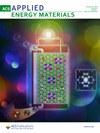Digital twin‐driven online intelligent assessment of wind turbine gearbox
IF 5.4
3区 材料科学
Q2 CHEMISTRY, PHYSICAL
引用次数: 0
Abstract
Remaining useful fatigue life monitoring of wind turbine drivetrains is important. However, the implementation of real‐time monitoring often faces efficiency and accuracy challenges. In order to resolve this, this paper proposes a vibration‐based damage monitoring digital twin (VBDM‐DT) that enables the online intelligent evaluation of wind turbine gearboxes, using gear tooth surface durability as an example fatigue mode. The VBDM‐DT integrates a random wind load model, a high‐fidelity dynamics model, and a fatigue damage model. The random wind load model takes the wind speed from the supervisory control and data acquisition (SCADA) as input to estimate the input torque of the drivetrain in real time. Simultaneously, VBDM‐DT uses the vibration signals from the condition monitoring system (CMS) to intelligently calibrate the dynamics model, allowing it to be continuously adjusted and optimized in response to actual vibrations. The fatigue damage model takes the real‐time dynamic loads estimated by the high‐fidelity dynamic model as input to achieve real‐time fatigue damage monitoring of key components in the wind turbine gearbox. Applying the VBDM‐DT model to a 2 MW wind turbine gearbox, the results indicate that the model provides satisfactory accuracy in estimating input loads and good adaptability in intelligent calibration of the dynamic model. Based on this model, the fatigue life estimation for gears and bearings is more credible and reliable.数字孪生驱动的风力涡轮机齿轮箱在线智能评估
风力涡轮机传动系统的剩余有用疲劳寿命监测非常重要。然而,实时监测的实施往往面临效率和精度的挑战。为了解决这个问题,本文提出了一种基于振动的损伤监测数字孪生系统(VBDM-DT),它能以齿轮齿面耐久性为疲劳模式示例,对风力涡轮机齿轮箱进行在线智能评估。VBDM-DT 集成了随机风载荷模型、高保真动力学模型和疲劳损伤模型。随机风载荷模型将来自监控和数据采集系统(SCADA)的风速作为输入,实时估算传动系统的输入扭矩。同时,VBDM-DT 利用状态监测系统 (CMS) 的振动信号对动力学模型进行智能校准,使其能够根据实际振动情况不断调整和优化。疲劳损伤模型以高保真动态模型估算的实时动态载荷为输入,实现对风力发电机齿轮箱关键部件的实时疲劳损伤监测。将 VBDM-DT 模型应用于 2 兆瓦风机齿轮箱,结果表明该模型在估计输入载荷方面具有令人满意的准确性,在动态模型的智能校准方面具有良好的适应性。基于该模型,齿轮和轴承的疲劳寿命估算更加可信和可靠。
本文章由计算机程序翻译,如有差异,请以英文原文为准。
求助全文
约1分钟内获得全文
求助全文
来源期刊

ACS Applied Energy Materials
Materials Science-Materials Chemistry
CiteScore
10.30
自引率
6.20%
发文量
1368
期刊介绍:
ACS Applied Energy Materials is an interdisciplinary journal publishing original research covering all aspects of materials, engineering, chemistry, physics and biology relevant to energy conversion and storage. The journal is devoted to reports of new and original experimental and theoretical research of an applied nature that integrate knowledge in the areas of materials, engineering, physics, bioscience, and chemistry into important energy applications.
 求助内容:
求助内容: 应助结果提醒方式:
应助结果提醒方式:


